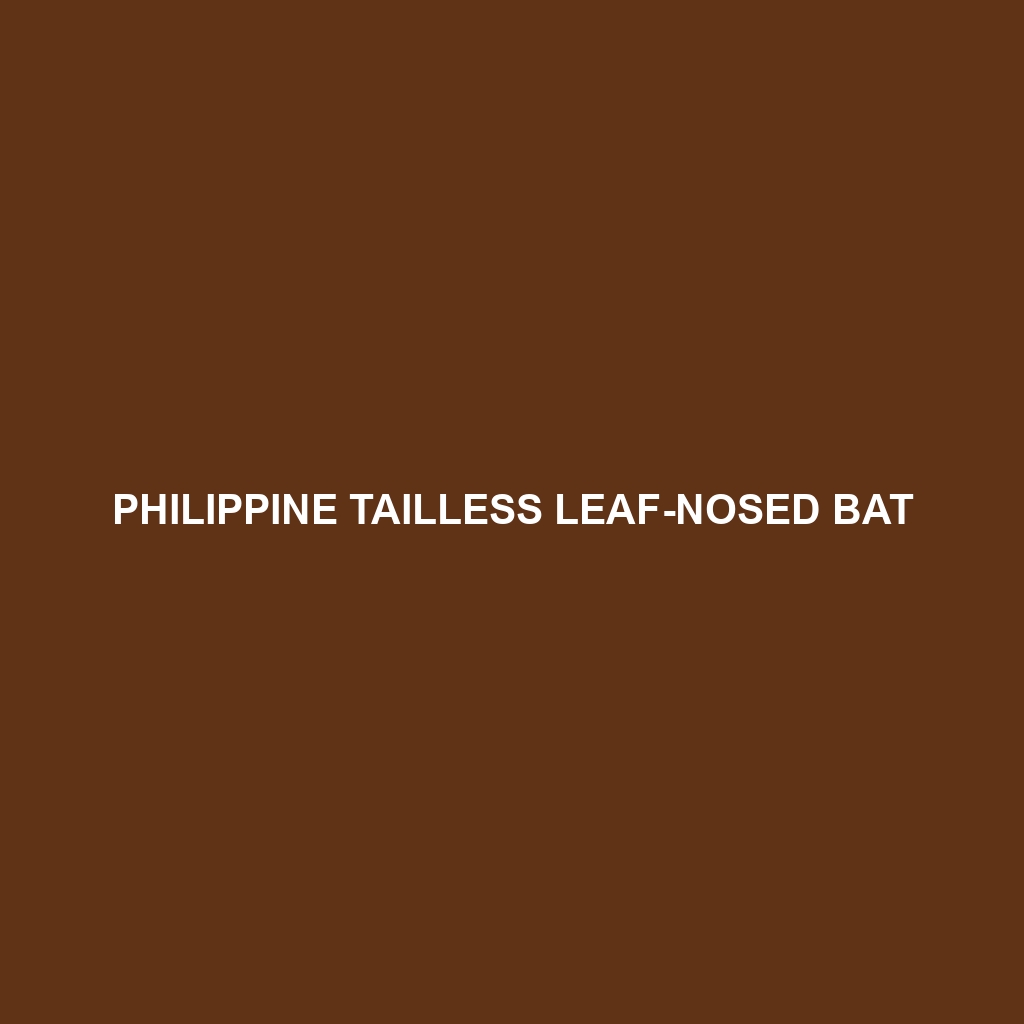Philippine Tailless Leaf-nosed Bat Species Description
Common Name: Philippine Tailless Leaf-nosed Bat
Scientific Name: Hipposideros obscurus
Habitat: The Philippine Tailless Leaf-nosed Bat is primarily found in the tropical forests of the Philippines, particularly on the islands of Mindanao and Luzon. These bats prefer humid environments, often inhabiting caves, where they roost during the day. They are generally located at elevations ranging from sea level to about 1,500 meters, thriving in regions with dense vegetation that provides cover and food sources.
Physical Characteristics: Measuring approximately 8 to 10 cm in body length, the Philippine Tailless Leaf-nosed Bat exhibits a distinctive leaf-shaped nose that is characteristic of its species. Its fur is typically a soft, dark brown color, which allows for effective camouflage against tree bark. This species is notable for its lack of a tail, which differentiates it from other members of the Hipposideridae family. The broad wings are adapted for agile flying through dense foliage.
Behavior: This bat species is primarily nocturnal and exhibits unique behaviors such as echolocation, which aids in navigating and hunting in dark environments. The Philippine Tailless Leaf-nosed Bat is social, often seen roosting in small colonies. During foraging flights, they may utilize various strategies to capture prey, including swooping down at high speeds to catch insects on the wing.
Diet: The diet of the Philippine Tailless Leaf-nosed Bat mainly consists of moths, beetles, and other flying insects. This bat is known for its selective feeding habits, often targeting specific types of insects that are abundant in its habitat. By controlling insect populations, it plays an important role in maintaining ecological balance and promoting plant health.
Reproduction: The Philippine Tailless Leaf-nosed Bat typically breeds once a year, with mating occurring in late summer. After a gestation period of approximately 2 to 3 months, females give birth to a single pup, which is nursed for several weeks. Maternal care is crucial for the survival of the young, who are dependent on their mothers for warmth and nutrition during their early development.
Conservation Status: The Philippine Tailless Leaf-nosed Bat is currently listed as Vulnerable on the IUCN Red List. Habitat destruction due to deforestation and human encroachment poses significant threats to its population. Conservation efforts are necessary to ensure the survival of this unique species.
Interesting Facts: One fascinating fact about the Philippine Tailless Leaf-nosed Bat is its ability to consume large quantities of insects each night, which can contribute to pest control in agricultural areas. Additionally, their echolocation ability is among the most sophisticated in the animal kingdom, allowing them to detect prey even in complete darkness.
Role in Ecosystem: The Philippine Tailless Leaf-nosed Bat plays a vital role in its ecosystem as both a predator and prey. By consuming insects, it helps regulate insect populations that could otherwise damage crops and vegetation. Furthermore, it serves as a food source for larger predators, highlighting its importance in the food web. These ecological interactions underscore the need for ongoing conservation efforts to protect this species and its habitat.
